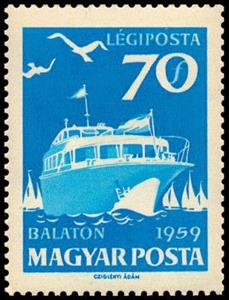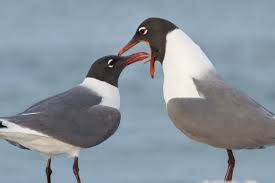Stamp: Ferry "Tihany" (Hungary 1959)
Ferry "Tihany" (Hungary 1959)
15 July (Hungary ) within release Lake Balaton (1959) goes into circulation Stamp Ferry "Tihany" face value 70 Hungarian fillér
| Stamp Ferry "Tihany" in catalogues | |
|---|---|
| Michel: | Mi:HU 1615A |
| Stamp Number: | Sn:HU C203 |
Stamp is square format.
AirmailAlso in the issue Lake Balaton (1959):
- Stamp - Tihany face value 20;
- Stamp - Ferry "Tihany" face value 70;
- Stamp - Hévíz and water lily face value 1;
- Stamp - Sailing boat "Saturnus" and fishermen statue face value 1.70;
- Stamp - Couple swimming & sun face value 60;
- Stamp - Ferry "Tihany" face value 70;
- Stamp - Fishermen, Fish face value 1.20;
- Stamp - Hévíz and water lily face value 1;
- Stamp - Sailboat on Lake Balaton, Gull (Larus sp.) face value 30;
- Stamp - Sailing boat "Saturnus" and fishermen statue face value 1.70;
- Stamp - Tihany face value 20;
- Stamp - Tourists and ferry "Beloiannisz" face value 2;
- Stamp - Vintager and lake Balaton face value 40;
- Stamp - Couple swimming & sun face value 60;
- Stamp - Ferry "Tihany" face value 70;
- Stamp - Hévíz and water lily face value 1;
- Stamp - Tihany face value 20;
- Stamp - Vintager and lake Balaton face value 40;
|
Data entry completed
56%
|
|
|---|---|
| Stamp Ferry "Tihany" in digits | |
| Country: | Hungary |
| Date: | 1959-07-15 |
| Perforation: | 11½ x 12 |
| Emission: | Air Mail |
| Format: | Stamp |
| Face Value: | 70 Hungarian fillér |
| Print run: | 375282 |
Stamp Ferry "Tihany" it reflects the thematic directions:
A ship is a large watercraft that travels the world's oceans and other sufficiently deep waterways, carrying passengers or goods, or in support of specialized missions, such as defense, research and fishing. Historically, a "ship" was a sailing vessel with at least three square-rigged masts and a full bowsprit. Ships are generally distinguished from boats, based on size, shape and load capacity.
Birds (Aves), a subgroup of Reptiles, are the last living examples of Dinosaurs. They are a group of endothermic vertebrates, characterised by feathers, toothless beaked jaws, the laying of hard-shelled eggs, a high metabolic rate, a four-chambered heart, and a strong yet lightweight skeleton. Birds live worldwide and range in size from the 5 cm (2 in) bee hummingbird to the 2.75 m (9 ft) ostrich. They rank as the class of tetrapods with the most living species, at approximately ten thousand, with more than half of these being passerines, sometimes known as perching birds. Birds are the closest living relatives of crocodilians.
A ferry is a boat or ship that transports passengers, and occasionally vehicles and cargo, across a body of water. A small passenger ferry with multiple stops, like those in Venice, Italy, is sometimes referred to as a water taxi or water bus.
Gulls, or colloquially seagulls, are seabirds of the family Laridae in the suborder Lari. They are most closely related to the terns and skimmers and distantly related to auks, and even more distantly to waders. Until the 21st century, most gulls were placed in the genus Larus, but that arrangement is now considered polyphyletic, leading to the resurrection of several genera.An older name for gulls is mews, which is cognate with German Möwe, Danish måge, Swedish mås, Dutch meeuw, Norwegian måke/måse, and French mouette, and can still be found in certain regional dialects
A lake is a naturally occurring, relatively large and fixed body of water on the Earth's surface. It is localized in a basin or interconnected basins surrounded by dry land. Lakes lie completely on land and are separate from the ocean, although they may be connected with the ocean by rivers, such as Lake Ontario. Most lakes are freshwater and account for almost all the world's surface freshwater, but some are salt lakes with salinities even higher than that of seawater. Lakes vary significantly in surface area and volume.
Animals are multicellular, eukaryotic organisms of the kingdom Animalia (also called Metazoa). All animals are motile, meaning they can move spontaneously and independently, at some point in their lives. Their body plan eventually becomes fixed as they develop, although some undergo a process of metamorphosis later on in their lives. All animals are heterotrophs: they must ingest other organisms or their products for sustenance.
Transport or transportation is the movement of people, animals and goods from one location to another. Modes of transport include air, rail, road, water, cable, pipeline and space. The field can be divided into infrastructure, vehicles and operations. Transport is important because it enables trade between people, which is essential for the development of civilizations.






